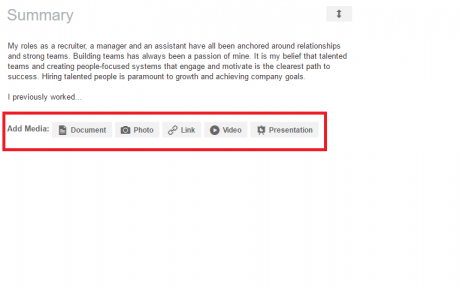We know a lot of people that are currently either looking for new opportunities or preparing to begin a job search. Whether you’re in the market for a new job or not, we recommend thoroughly reviewing your profile a few times a year.
If you are focused on pursuing new opportunities, there are a couple of important steps that you can take to polish up your profile and provide a few finishing touches. Here are 4 pointers on what to look for when you review your Profile in case of a new opportunity:
#1 Proofread, proofread, proofread
It may seem obvious, but I see profiles every day with misspellings, grammatical errors and inaccuracies. Very few recruiters, managers and HR representatives will consider you for a role if they notice that you have errors in your profile or resume. Being detail-oriented and accurate is an important part, and even requirement, of just about every role out there.
I recommend setting aside 15-20 minutes to thoroughly proofread your profile in order to make any corrections needed. Read through each section to ensure that the language is clear and the spelling and grammar are correct so that you are not overlooked for a great new opportunity.
#2 Remove/Replace buzzwords
There are a lot of buzzwords in the business world. Some people have incorporated them into their vernacular so fully that they don’t even realize how often they are using them. I get it; they’re fun, they’re expressive and they’re so prevalent that it’s easy to overuse them yourself.
Unfortunately, it’s a bit of a trap. While some wouldn’t even blink at seeing words such as “innovative” or “passionate” on your profile or resume, others will be instantly turned off and see it as insincere or overstated. If you’re wondering how to spot buzzwords in your Profile or resume, read our blog post “Buzzwords to Avoid in Your LinkedIn Profile.”
And then start the hunt to identify and remove or replace those words. In some cases, you can simply eliminate the word and not affect the meaning of your statement or sentence at all. In other cases, you’ll need to find another word that more plainly expresses what you’re trying to say.
#3 Add numbers
I make this recommendation a lot. The truth is that I don’t ever see enough Profiles or resumes with numbers and data. Recruiters like to see facts and information that can be measured and proven. This helps them to gauge how successful you’ve been and how successful you may be in a new position.
Even if you’re not in sales or have specific numerical expectations and goals tied to your role, you can still find a way to quantify your experience and accomplishments. How many projects have you worked on this year? What were their measurable outcomes? Details like this give recruiters a more accurate idea of what you’ve actually done. This is an important one, folks!
#4 Add documents/photos/links/videos/presentations
If you look at your profile, you’ll see an area under your Summary and each of your positions in the Experience section where you can add media:

This is a great way to showcase your work through alternative means. Have you created presentations that can be shared? Do you have links to a creative portfolio that you can add? Think about what you’ve created/completed successfully and how you can share it. It will round out your profile and is, again, more evidence-based than simply saying you’re good at something.
As I previously stated, there’s a lot of job activity going on out there right now. Make sure that you’re ready and looking good for any upcoming opportunities. For additional help, we’ve written on this topic several times before. You can review a few of these other blog posts regarding updating your profile regularly or ahead of time when beginning a job search:
LinkedIn Profile Tips for Professionals in Transition, Part 1
LinkedIn Profile Tips for Professionals in Transition, Part 2


